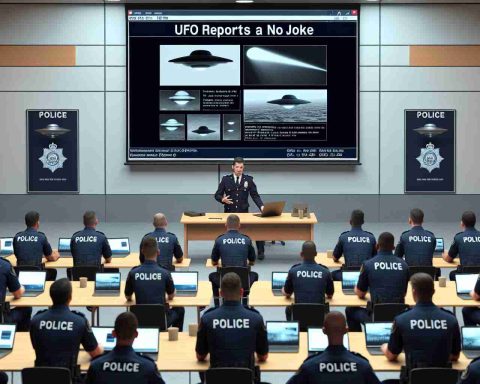The Future of Exoplanet Research
The count of confirmed exoplanets has reached an impressive 5,819 within 4,346 star systems, with even more waiting for confirmation. Most of these discoveries have been made over the last two decades, spurred by innovative missions like the Kepler Space Telescope and TESS. As advancements continue, the James Webb Space Telescope and the forthcoming Nancy Grace Roman Space Telescope promise to enhance our knowledge further.
Joining this exploration is Pandora, a novel satellite born from NASA’s Pioneer mission initiative. This state-of-the-art observatory will focus on analyzing the atmospheres of known exoplanets and studying their host stars through long-duration, multiwavelength observations. Recently, the spacecraft’s bus—essential for its structural integrity and functionality—has been completed, marking significant progress toward its launch.
Pandora aims to differentiate signals from a star and its orbiting planets by closely monitoring stellar brightness. This observation will allow scientists to gather atmospheric spectra from 39 exoplanets around 20 stars during its primary mission. A key part of this research will be identifying essential elements such as hazes, clouds, and water—critical for assessing planetary habitability.
Pandora’s capabilities will not only enrich our understanding of exoplanets but also refine insights provided by larger telescopes, thereby paving the way for future discoveries in the quest for extraterrestrial life.
The Broader Implications of Exoplanet Research
The evolving field of exoplanet research holds profound implications for society and culture, shaping our understanding of life’s potential beyond Earth. As we uncover the diversity of planetary systems, the possibility of habitable worlds sparks both imagination and philosophical inquiry about humanity’s place in the universe. With each discovery, we are compelled to rethink the narratives of our own origins and how we connect with the cosmos.
The global economy may also feel the reverberations of this research. As technology advances, industries related to aerospace and information technology are likely to grow. Innovations spurred by space exploration often translate to terrestrial applications, driving job creation and enhancing capabilities in fields such as telecommunications and artificial intelligence.
Furthermore, as tools like Pandora enable more detailed atmospheric studies, the insights gained may assist in identifying signs of life beyond our solar system. The pursuit of exoplanet research could foster international collaboration, with countries pooling resources and expertise, thus heralding a new era in collectively addressing global challenges.
Lastly, the environmental impacts of such research should not be overlooked. As we push boundaries in technology and exploration, it raises questions about sustainability and the ecological footprints of our endeavors. With the future of exoplanet research illuminating our quest for understanding habitable environments, we must balance ambition with responsibility. Ultimately, the long-term significance of these explorations may redefine not only our search for extraterrestrial life but also our approach to preserving life on our own planet.
Unlocking the Secrets of Exoplanets: The Next Phase in Cosmic Exploration
The Future of Exoplanet Research
As of now, the confirmed count of exoplanets stands at an astonishing 5,819 across 4,346 star systems, with many more discoveries on the horizon. This explosive growth in exoplanet research has been propelled by a series of pioneering missions, including the renowned Kepler Space Telescope and the Transiting Exoplanet Survey Satellite (TESS). These advancements are set to continue, significantly enhanced by the capabilities of the James Webb Space Telescope (JWST) and the upcoming Nancy Grace Roman Space Telescope.
Innovations in Exoplanet Observation
A new player in this field, Pandora, is a satellite developed under NASA’s Pioneer mission initiative. This cutting-edge observatory is uniquely designed to analyze the atmospheres of known exoplanets while also studying their host stars through comprehensive multiwavelength observations. The completion of Pandora’s structural bus is a critical milestone, indicating profound progress toward its anticipated launch.
Features and Mission Objectives
Pandora is engineered to effectively differentiate between the signals of a star and its orbiting planets. This capability is crucial for accurately monitoring stellar brightness, which will allow scientists to obtain atmospheric spectra from 39 exoplanets within 20 star systems during its primary mission. Key research areas will include the detection of atmospheric components such as hazes, clouds, and water vapor—elements that are essential for evaluating the habitability of these distant worlds.
Use Cases and Research Implications
The data collected by Pandora will significantly enhance our understanding of exoplanetary atmospheres. It will also provide valuable input that refines the findings from larger telescopes like the JWST. As researchers search for potential indicators of extraterrestrial life, Pandora’s insights will likely lead to groundbreaking discoveries and a deeper understanding of how these planets might support life.
Limitations and Challenges
Despite its advanced technology, Pandora will face challenges common in space exploration, such as instrument calibration, data interpretation, and the need for effective signal processing amidst stellar noise. Moreover, the limitations of observational timeframes and telescope sensitivity will play a role in how exhaustively it can map and analyze exoplanet atmospheres.
Market Trends and Collaborations
The continual evolution of exoplanet research is supported by increasing collaboration among various space agencies, universities, and private institutions. The integration of findings from multiple telescopes and missions is a trend that fosters a symbiotic environment for advancing knowledge.
Conclusion and Future Outlook
With the successful operation of Pandora combined with the ongoing advancements from missions such as JWST and TESS, the future of exoplanet research is set to soar into new realms of discovery. As scientists fine-tune their observations, we stand on the brink of unraveling the mysteries of distant worlds, ultimately improving our understanding of where we fit in the vast cosmos.
For more information on the latest advancements in space exploration, visit NASA.



















